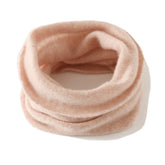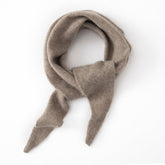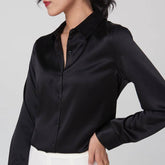Satin vs Silk
As our brand gained more traction in the North American market, it seems that more and more people are writing to inquire about the difference between silk and satin (mostly on pillowcases). Indeed, when one searches for silk pillowcases on Google, Amazon or Ebay, the returned results often contain a large amount of satin, often at much lower prices. It's no wonder that people want to know the reason behind the pricing difference, so we will attempt to explain the exact difference between silk and satin.
First of all, one should know that the so-called silk vs satin is, in fact, a false proposition - silk is a type of fabric, while satin is a weave, which means that there are in fact SATIN SILK, although it's safe to say that 99% of the satin products sold on the market at low prices are *not* made with silk, but with polyester instead. So, instead of discussing silk vs satin, the question can be changed into the differences between Charmeuse silk and polyester satin, for which a proper comparison can be made.
So, what is the fundamental difference between silk and polyester? We believe the fundamental difference lies in the way these materials are produced. Silk is a naturally made animal protein fiber, whereas polyester is a industrially produced fiber made from petroleum. As such, silk offers significantly better affinity to skin due to similar chemical composition. Compared to silk's smooth and light feel on the skin, polyester is hard, brittle and not very breathing at all.
The difference between naturally spun silk and factory-produced polyester extends beyond the simple contrast of feel and comfort. Silk is used by cosmetic surgeons and beauty salons around the world as THE material for facial beauty for its smoothness as well as the rich amount of nutrients contained in its fibers. The amino acids in silk fibers are essential to the human body and help replenish lost collagen in the skin, and the high moisture absorption rate of silk helps keep your skin at just the right humidity. The great insulation properties of silk help keep the temperature around your skin at an optimal level, providing not only comfort, but also the perfect environment for your skin to regenerate during sleep. Polyester, while also smooth, pales in comparison in this regard - although it is also somewhat effective in reducing morning hair and sleep wrinkles.
From a maintenance point of view, silk is a bit more difficult to wash due to it being more delicate and require more attention. However, silk is *hypoallergenic* and repels common household allergens including bacteria, mold, fungi, and dust mites alike, so you will most likely find less annoying substances on a silk sheet/pillowcase than a polyester one. If you are already suffering from allergies, the choice is really a no-brainer.
Lastly, we take a look at the cost. This is the one criterion for which polyester has a convincing victory. A polyester satin pillowcase costs roughtly 1/4 to 1/2 of a silk pillowcase of the same size, so if you are financially strained, getting a polyester satin pillowcases will help you get the sleep beauty routine started. Of course, when you are become more financially capable, our recommendation would be to get our Charmeuse silk pillowcase to receive full benefits high-end bedding has to offer.
- Choosing a selection results in a full page refresh.










